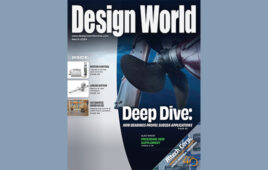Halt and catch fire: The perils of cheap PoE
Dave Jeskey tells an interesting story about what happened when an LED lighting company operated a few of its products in a test chamber. The RJ45 plugs, used for making a connection to a Power over Ethernet cable, melted. The RJ45 plugs came from Sentinel Connector Systems where Jeskey is director of sales and marketing. When Sentinel tore down and examined the damaged units, the problem became obvious: Cheaply built RJ45 jacks into which Sentinel’s plugs fit.
“There were transformers built into the jacks that had been badly hand-wound rather than machinewound. They had also substituted a cheaper ferrite core that was slightly conductive,” says Jeskey. The melting of the RJ45 plug (which had been designed to melt at 250⁰C, more than melting point of tin) had probably prevented the poorly made jack from causing a fire, he says. It let the conductors pull away and disconnect before the heat from bad connections caused more damage.
The near catastrophic failure of that RJ45 jack is a microcosm of the problems that will soon plague PoE installations. New specifications let PoE lines deliver up to 100 W using plugs, jacks and cabling that are similar to those for ordinary Ethernet. But small imperfections and corner-cutting on costs can make for big problems when that much power passes through the relatively small conductors of Ethernet connections.
Corner-cutting on PoE gear is particularly widespread among foreign suppliers Jeskey adds. One of the easiest places to cut corners is with gold plating.
“The plating on a contact is supposed to be 50 μin. of 24-carrot gold over a minimum of 50 μin. of pure nickel. We’ve studied over 70,000 part numbers and 94% of them failed to meet those minimum standards. I’ve seen parts using as little as 1.5 μin. of gold and even parts with a statement in the specification saying, ‘gold color only.’”
It isn’t just scrimping on gold that is problematic. “RJ45 conductors have a surface smoothness specification. The proper way to realize it is to first electropolish the contacts, coat them with nickel, and then add the gold. Some foreign suppliers will just wire-brush the surface to make it smooth. The brushing creates ridges and valleys which make the connection less reliable,” says Jeskey.
Other problems arise because PoE connections are hot pluggable. Small sparks form when the plug disconnects from the jack. The sparks may cause problems even in well designed connections,
he says. Cheap connections are even worse. “Jack contacts are supposed to be phosphor-bronze but some suppliers cheat with brass and other cheaper metals,” he adds. “When you create a spark, it alters the crystalline structure of the contact and eventually makes it brittle. Some equipment makers claim that spark isn’t a problem because it happens away from the data transmission lines. But a spark alters the whole contact, not just the area where it occurs.”
 And it isn’t just PoE connections that are problematic. Ethernet cables can contain different wire sizes. “Some companies use 22 gauge wire, which is good if you have plugs and jacks able to handle it,” Jeskey says. “The best-selling cable contains 28-gauge wire. But some foreign suppliers are selling Ethernet cable with much thinner 30 and 32-gauge wire. That is dangerous.”
And it isn’t just PoE connections that are problematic. Ethernet cables can contain different wire sizes. “Some companies use 22 gauge wire, which is good if you have plugs and jacks able to handle it,” Jeskey says. “The best-selling cable contains 28-gauge wire. But some foreign suppliers are selling Ethernet cable with much thinner 30 and 32-gauge wire. That is dangerous.”
LEE TESCHLER | EXECUTIVE EDITOR
Filed Under: IoT • IIoT • Internet of things • Industry 4.0, DIGITAL ISSUES • DESIGN WORLD




